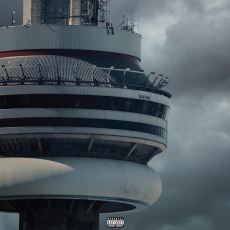
Email: emanuelealbertocirello.98@gmail.com
Total Article : 76
About Me:I am a Year 13 student which aspires to be an architect. I am interested in anything I don't yet know, and I mostly write about art, politics , Italian culture and inspirational people, although I will try to write for as many categories possible, just to test myself and get to know more things.

At the origin, no one would have thought that, back in the 1980’s, rap would become so popular and widespread. The rap and hip-hop culture were limited to the 'hood', the 'gangsta life', the drugs, the money and the 'bi***es'. Back in 1980’s rap belonged to the marginalised, the ghetto people, that through rap found a way to express themselves and their struggle; but in a racially divided society, where people were only starting to accept ideas of equality, who really cared about their struggle if not people in the struggle? This meant that rap was only made for a few people and it only reached out to a few people, and it was doomed to stagnate in a pond of discrimination and misunderstanding.
Then at some point in time, the 'gangsta', the hood and the 'bi***es' reached out to the white young generations, it became more spread across the USA and it started to get recognition. Rap became the voice of the unheard, and people started understanding that the dark people in their neighbourhoods were actually rapping about things much deeper than money and 'bi***es'. People realised that there were serious social issues in the society and rap became eventually poetry in some cases, where racism, life, death and relationships became the muses of the genre.
At this point rap became more popular, gradually, and more and more people of all races started to appreciate the artistry of many. Rap became a well-known genre and it was booming through the 90’s and the 00’s; the peak of the mainstream era.
Then there was a slight drop and crisis in sales: rappers had to innovate and reinvent themselves. And they did, they really did it in great fashion. Kanye West, especially, brought the culture back on the charts and in the radios in the mid-2000s; his albums 'Graduation' and '808 & Heartbreak' were two of the most significant projects since hip-hop music was invented. Its critical acclaim and commercial success encouraged rappers to get back on track and take more creative risks. Kanye West has been of immense importance, because with him, rap music started to slowly become the new rock. He set the path for the success of Kid Cudi, Lupe Fiasco, and J. Cole, and brought hip-hop back into the life of the people through a variety of platforms.

The post-2008 world has witnessed a colossal rise of the genre. Radio stations, TV programmes, social media and the internet are dominated by the presence of rappers and hip-hop artists that have reached the peak of their fame and have created a cult following.
Rap entered the 'bling era' when rappers started to sugar coat their musical success with their involvement in fashion and rock-culture. Rappers such as Lil Wayne, Jay Z and Young Thug have heavily affected fashion trends among young people. In the 80’s the rap culture promoted the Adidas’ Superstar Shoes and the Nikes’ Air Forces, that have become an evergreen of the fashion world and in recent years, with the rap industry getting wealthier Louis Vuitton, Gucci and Calvin Klein became the new representatives of the hip-hop lifestyle. Some rappers have even become their own fashion brand, such as Kanye West and his widely known Yeezy collection, whereas some have become the ambassadors for fashion companies, such as A$AP Rocky for Dior and Vic Mensa for Converse.
In 2013, Kanye West said, 'We culture. Rap is the new rock 'n roll. We the rockstars!' in an interview with Zane Lowe on BBC One and he was right. Rappers are now idolised and publicly known; even if you are not a fan of the genre, you have definitely heard a rap song in the last 24 hours - even if you did not want to. Rappers have become Rap stars and VIPs; they attend fashion events, they appear on magazines, they perform on live TV and they have redefined the approach that music has with the rest of the creative arts.
By the numbers, the R&B/Hip-hop music amounts to 21.1% of music streams and amount to 18.2% of total consumption. Drake, who is arguably one of the most successful rappers of all time (not necessarily the best), is one of the most streamed artists on Spotify with an incredible 32 million monthly listeners, with his song “One Dance” having more than 1.5 billion streams. The Grammy awards and the BET awards also offer great publicity to the genre, with Beyoncé, Jay Z and Kanye West all with more than 20 Grammy awards.
It is therefore visible that, whether you like the genre or not, that rap music is becoming the new rock ‘n roll, even at the expense of the quality of the music. By rap music becoming more and more popular, artists have had to follow trends, produce bland music and adapt to the taste of the masses, both lyrically and musically, and if becoming such a mainstream success has brought the genre to the top of the Olympus, it has definitely taken away its artistic meaningfulness and its underground taste.
Image credits: https://uk.pinterest.com/twistinandout/hip-hop-album-covers/
http://hiphopdx.com/news/id.37927/title.drake-officially-confirms-views-from-the-6-release-date

0 Comment:
Be the first one to comment on this article.